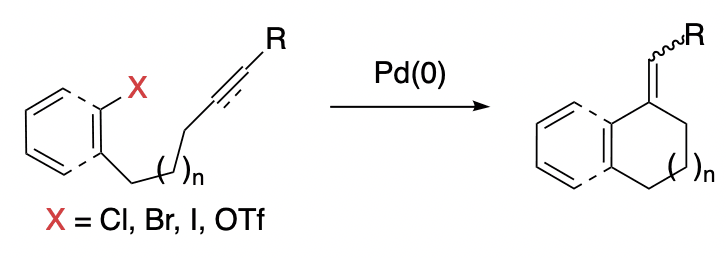The Intramolecular Heck Reaction
Abstract
 Graphical Abstract by Jamie King
Graphical Abstract by Jamie King
Since the discovery of the Heck reaction, the process has gained widespread acceptance within the synthetic community both as a practical tool and a research area. The intramolecular Heck reaction has enjoyed a similar renaissance, particularly within the last decade. The reaction has emerged as a reliable method for efficiently constructing small, medium, and large rings. Since the reaction occurs under mild and nearly neutral conditions, the functional group tolerance is high. Tandem reactions, which are initiated by intramolecular Heck reactions, have been developed allowing for multiple ring formations, cyclization and intermolecular coupling, and a multitude of other ever-expanding possibilities. Furthermore, congested tertiary and quaternary centers can be efficiently constructed diastereoselectively or enantioselectively during the ring-forming reaction. The numerous advances in reaction technology and capability have led to frequent application of the reaction in complex molecule synthesis and combinatorial library preparation. For the purposes of this chapter, the intramolecular Heck reaction is defined as the palladium[0]-catalyzed intramolecular coupling of an aryl or alkenyl halide or perfluorosulfonate with an alkene, alkyne, allene, or arene.
The mechanism of the Heck reaction is an active area of research. Precise mechanistic details vary substantially depending upon catalyst, substrate, additives, and reaction conditions. The introduction given here is designed to give the chemist a basic understanding of the currently accepted mechanisms to aid in the rational selection and optimization of reaction conditions. Application to total synthesis of natural products and intramolecular Heck reactions on polymer supports are discussed.

